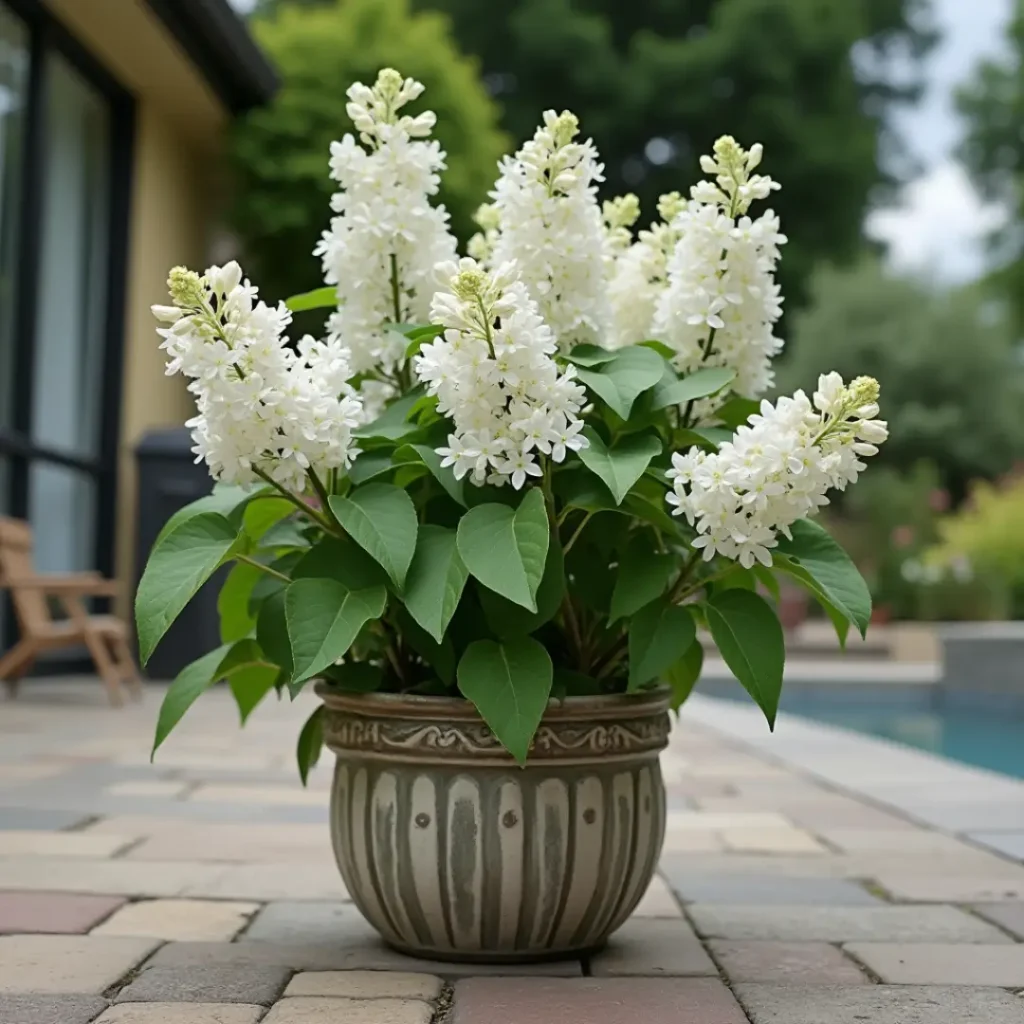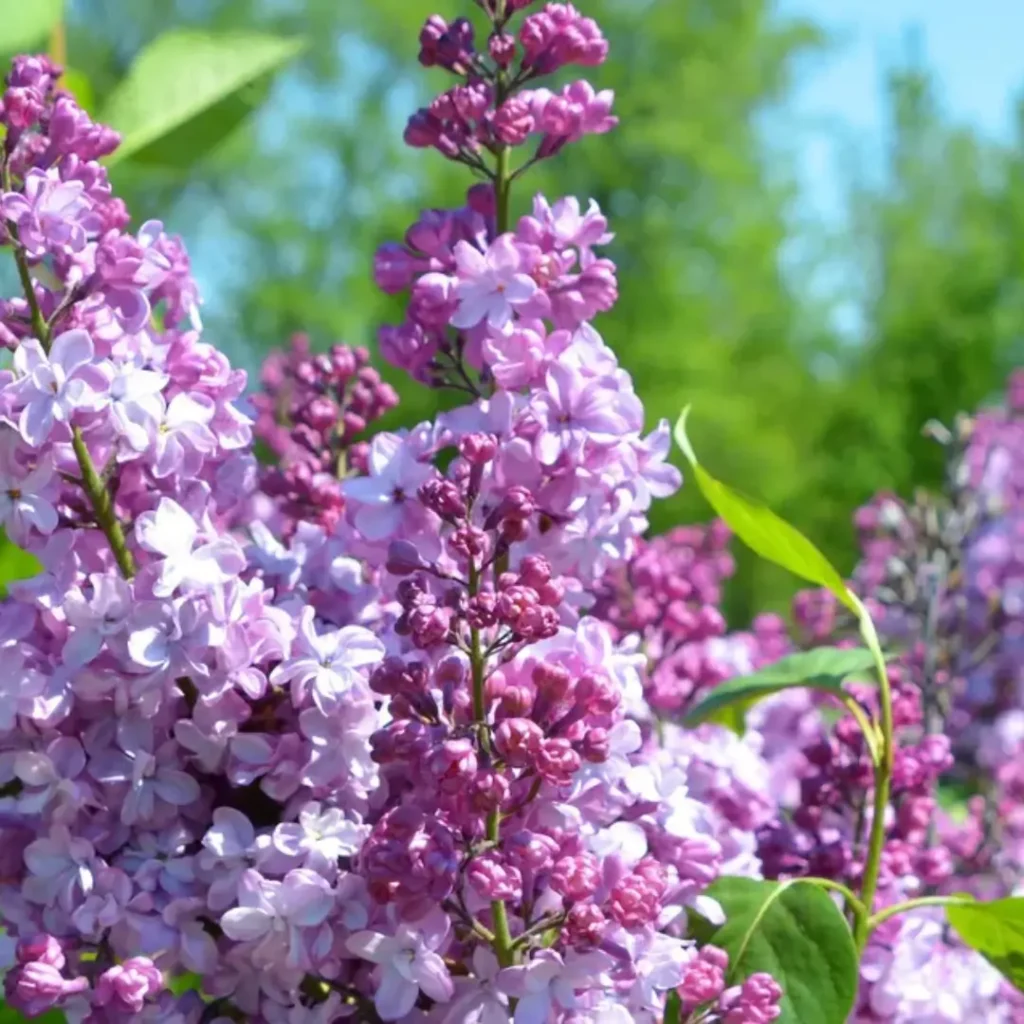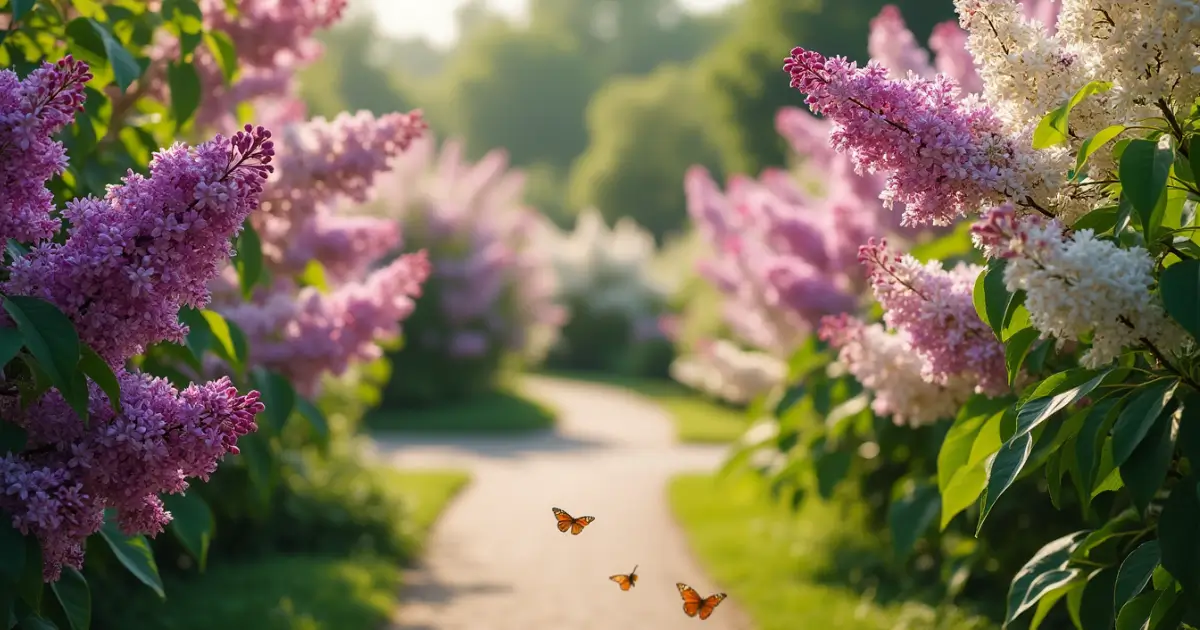Lilac Bush Mastery in 2025 : A Complete Guide to Planting, Growing, and Caring for Stunning Blooms
Introduction
Lilac bushes are among the most beloved flowering shrubs in gardens worldwide. Their breathtaking spring blooms, enchanting fragrance, and minimal maintenance requirements make them a favorite among both beginner and experienced gardeners. Whether you’re looking to enhance your landscape with a stunning lilac hedge or grow a small one in a container, these plants offer unmatched versatility and charm.
One of the reasons lilacs remain so popular is their ability to thrive in various climates. These hardy perennials can withstand cold winters and adapt to different soil conditions, making them a reliable choice for gardeners seeking long-lasting beauty. Additionally, lilac bushes provide ecological benefits, attracting pollinators such as bees and butterflies while offering shelter for small wildlife.
At GardeningFromHome, we are passionate about helping gardeners cultivate beautiful, thriving plants with ease. In this comprehensive guide, we will explore the best varieties, the optimal lilac time to plant, and how to care for lilac bushes to ensure they flourish. Whether you’re troubleshooting why your lilac isn’t blooming or looking for companion plants to enhance its beauty, you’ll find everything you need right here.
By the end of this guide, you’ll have all the knowledge required to grow and maintain healthy, vibrant lilac bushes in your garden, ensuring they bloom beautifully year after year. Let’s get started ! 🌿✨
Table of Contents
1. Best Lilac Bush Varieties for Your Garden
Lilacs come in various sizes, colors, and growth habits, making them a versatile choice for any landscape. Some of the best varieties include :
- Common Lilac (Syringa vulgaris) : A classic, large variety with purple or white flowers.
- Dwarf Korean Lilac (Syringa meyeri ‘Palibin’) : A small lilac bush perfect for compact gardens.
- Miss Kim Lilac (Syringa patula ‘Miss Kim’) : Cold-hardy with lavender-blue flowers.
- Japanese Tree Lilac (Syringa reticulata ): A taller lilac variety with creamy white blossoms.
- Bloomerang Lilac : A reblooming lilac that flowers in spring and again in late summer.

2. When and How to Plant Lilac Bushes
The best lilac time to plant is during early spring or fall, when the weather is mild. Follow these steps to ensure successful planting :
- Choose the Right Location : Lilacs thrive in full sun and well-draining soil.
- Prepare the Soil : Mix compost or organic matter to improve drainage.
- Dig the Hole: Make it twice as wide as the root ball but not deeper than necessary.
- Plant correctly : Place the root ball in the hole and fill it with soil.
- Water Thoroughly : Keep the soil moist but not soggy.
- Mulch Around the Base : Helps retain moisture and suppress weeds.

3. Caring for Lilac Bushes: Essential Tips
To maintain healthy and vibrant lilac bushes, follow these essential care tips :
Watering Needs
- Lilacs need moderate watering, especially during dry spells.
- Avoid overwatering to prevent root rot.
Fertilization
- Use a balanced, low-nitrogen fertilizer in early spring.
- Avoid excessive fertilization, as it can reduce blooms.
Pruning for Better Growth
- Prune right after flowering to encourage next year’s growth.
- Remove dead or weak branches to improve air circulation.
Preventing Pests and Diseases
- Common issues include powdery mildew and lilac borers.
- Use organic sprays or neem oil to control pests naturally.
4. Small Lilac Bushes : Perfect for Compact Spaces
If you have a small garden, you can still enjoy lilacs ! Consider these compact varieties :
- Dwarf Korean Lilac : Ideal for container gardening.
- Baby Kim Lilac : A petite version of ‘Miss Kim’ with a dense shape.
- Little Lady Lilac : Small but produces abundant flowers.
Growing Lilacs in Containers
- Use a large pot with good drainage.
- Water regularly but avoid soggy soil.
- Place in full sun for best blooms.

5. When and How to Transplant Lilac Bushes
Transplanting the flower can be tricky, but it’s possible with proper timing and technique.
Best Time to Transplant
- The best time is in early spring or fall, when the plant is dormant.
Steps to Transplant Successfully
- Prepare the New Location : Ensure it has full sun and well-draining soil.
- Dig Up the Lilac : Carefully remove it with the root ball intact.
- Replant Immediately : Place it in the new hole and water deeply.
- Monitor for Stress : Keep it well-watered for the first few weeks.
6. Why Your Lilac Bush Isn’t Blooming and How to Fix It
Common Causes:
- Lack of Sunlight : Lilacs need at least 6 hours of sun daily.
- Improper Pruning : Cutting too late can remove next year’s buds.
- Excess Nitrogen : Leads to leafy growth instead of flowers.
- Age of the Plant : Young lilacs may take a few years to bloom.
Solutions to Encourage Blooms
- Prune right after flowering.
- Apply phosphorus-rich fertilizer in early spring.
- Ensure proper sun exposure.

7. Propagating Lilacs : How to Grow More for Free
You can propagate lilacs using cuttings, suckers, or layering.
Best Propagation Methods:
- Cutting s: Take a softwood cutting in late spring and plant in moist soil.
- Suckers : Dig up shoots growing near the base and replant.
- Layering : Bend a lower branch to the ground and cover it with soil until it roots.
8. Companion Plants for Lilacs : What Grows Well Together
Pair your lilacs with these plants to enhance their beauty:
- Peonies : Complement lilacs with their lush blooms.
- Daylilies : Provide contrast with vibrant summer flowers.
- Hydrangeas : Extend the flowering season in your garden.
- Catmint : Attracts pollinators and adds texture.

9. Conclusion :
Enjoying the Timeless Beauty of Lilac Bushes with Gardening From Home
Lilac bushes are more than just ornamental plants; they are a symbol of timeless beauty, resilience, and natural elegance. Their fragrant blooms signal the arrival of spring, filling the air with a sweet scent that lingers throughout the garden. Whether you’re cultivating a large hedge of lilacs or nurturing a small lilac bush in a container, these plants reward you with vibrant flowers and minimal maintenance requirements.
By selecting the right lilac bush varieties, planting at the right time, and following essential care practices, you can ensure your lilacs remain healthy and produce an abundance of blooms each year. Proper watering, fertilization, pruning, and pest prevention are key to maintaining their vigor and beauty.
At Gardening From Home, we believe that anyone can cultivate a stunning garden with the right knowledge and guidance. Whether you’re a beginner or an experienced gardener, growing lilacs can be a rewarding and joyful experience. With patience and attention, lilacs can thrive for decades, becoming a cherished part of your landscape. Whether you plant them for their visual appeal, their ability to attract pollinators, or their nostalgic fragrance, lilacs will always bring joy to any gardener.
Start planting today with Gardening From Home, and enjoy the beauty of lilacs for years to come ! 🌿💜✨
10. FaQs :
1. What are the best lilac bush varieties for small gardens ?
For small gardens, compact lilac varieties work best. Some excellent choices include :
- Dwarf Korean Lilac (Syringa meyeri ‘Palibin’) – A small, rounded shrub that thrives in containers.
- Baby Kim Lilac – A petite version of the Miss Kim lilac, perfect for small spaces.
- Little Lady Lilac – A dense, low-maintenance lilac bush with vibrant blooms.
- Bloomerang Lilac – A reblooming variety that stays relatively compact.
2. When is the best time to plant lilac bushes ?
The best lilac time to plant is in early spring or fall, when temperatures are cool and the plant can establish roots before the hot summer or freezing winter. Fall planting is often preferred as it allows the roots to develop over winter, leading to stronger spring growth.
3. How do I care for lilac bushes to ensure healthy growth ?
To care for lilac bushes :
- Sunlight : Ensure at least 6 hours of full sun per day.
- Soil : Use well-draining, slightly alkaline soil.
- Watering : Water regularly but avoid overwatering.
- Pruning : Remove dead wood and shape the bush right after flowering.
- Fertilization : Use a low-nitrogen fertilizer in early spring to encourage blooms.
4. Why isn’t my lilac bush blooming ?
If your lilac bush isn’t blooming, the causes may include :
- Insufficient sunlight – Lilacs need at least 6 hours of direct sun.
- Over-pruning – Cutting back too late in the season removes next year’s buds.
- Too much nitrogen – Encourages leafy growth but reduces flowers.
- Age of the plant – Some young lilacs take a few years before blooming.
To encourage flowering, apply phosphorus-rich fertilizer, prune properly, and ensure enough sunlight.
5. Can I grow lilac bushes in containers ?
Yes, you can grow a small lilac bush in a container! Choose a dwarf variety like Dwarf Korean Lilac or Baby Kim Lilac. Use a large container with drainage holes, plant in well-draining soil, and place the pot in a sunny location. Water regularly and fertilize in spring to keep it healthy.
6. How do I prune lilac bushes for better blooming ?
Prune lilac bushes right after they finish blooming to avoid cutting off next year’s flower buds. Remove:
- Dead or diseased branches
- Old stems that no longer produce flowers
- Excess growth to improve air circulation
Regular pruning helps rejuvenate older bushes and keeps them blooming for years.
7. What are common lilac pests and diseases, and how can I prevent them ?
Common issues include :
- Powdery Mildew: A white fungal growth on leaves—prevent with proper airflow and neem oil.
- Lilac Borers: Insects that tunnel into stems—remove affected branches and use organic pesticides.
- Aphids: Small insects that suck plant juices—spray with water or insecticidal soap.
Keeping lilacs well-pruned and healthy will minimize the risk of pests and diseases.
8. Can I propagate lilac bushes at home ?
Yes! Lilacs can be propagated by :
- Softwood Cuttings : Take a cutting in late spring, plant in moist soil, and keep it humid.
- Suckers : Dig up small shoots growing near the base and transplant them.
- Layering : Bend a lower branch to the ground, cover it with soil, and allow roots to form before cutting it away.
Propagation is a great way to get more lilac bushes for free! 🌱💜
You have not enough Humanizer words left. Upgrade your Surfer plan.

